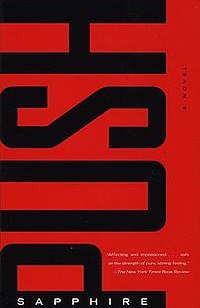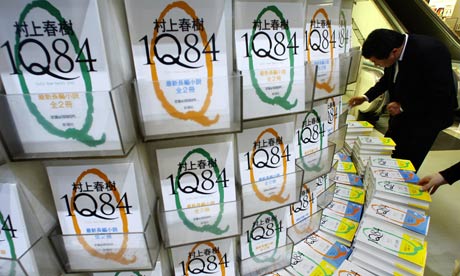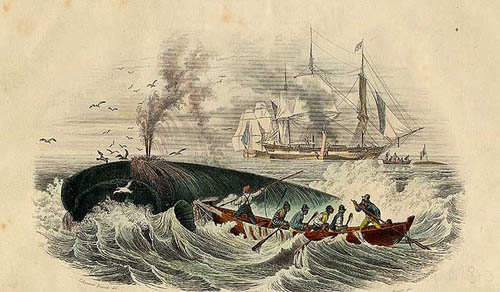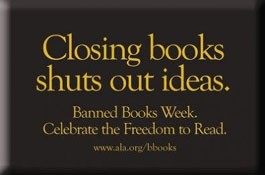
Book Reviews, Author Interviews, Literary Trends, and the Latest in Queer Culture.
Monday, October 31, 2011
A Final Word for Steve Jobs

Sunday, October 30, 2011
Your NaNoWriMo Prep Kit

Tuesday marks November 1st, which means the beginning of the 12th annual National Novel Writing Month (NaNoWriMo). The project began in July 1999 and challenges writers to create a 50,000 word script in 30 days. Last year, over 200,000 participants took up the challenge. You have all of November to write, but you need to prep in the meantime. Here are some resources to help:
Friday, October 28, 2011
You, Me, Him, Her, and Them: We

In the 1990s, while Janet Jackson was popular and teenagers could be seen reading a ‘zine in an oversized sweatshirt, many young adults rallied with Amy Sonnie to create what didn’t exist yet: a queer youth anthology. Teens from all over the world – Australia, China, Korea, Pakistan, Europe, India, and all across the US from south Georgia to the tip of Alaska – submitted poetry, short stories, art, essays, and songs to create what is now known as Revolutionary Voices: A Multicultural Queer Youth Anthology, which was published in 2000. The book was named one of the best adult books for high school students by the School Library Journal in 2001 and was a finalist for a Lambda Literary Award in 2000.
Margot Kelley Rodriguez, author of the Revolutionary Voice introduction, explains why the piece was essential to the acceptance of the gay community – particularly the queer youth community – during the tale-end of the 20th century, and why it continues to serve as a powerful learning tool now. “These young artists shout out, ‘We have taken matters into our own hands, and we are mad as hell. We are here!’” Rodriguez writes in the book’s foreword. “The mainstream movement calls us the ‘future.’ What the movement doesn’t realize is that we are the present. We are not waiting for tomorrow, because we have something to say right now.”
Since the 2000 release, the book has spurred the founding of RESYST (Resources for Youth, Students, and Trainers), a nation-wide radical queer youth organization. On top of that, Revolutionary Voices has created a hefty amount of controversy, and not just in the weeks and months after the anthology hit stores. Last year, the media erupted in debate throughout the small town of Burlington County, New Jersey.
The Burlington Country public library ordered all copies of Revolutionary Voices off of library shelves in August 2010 after Beverly Marinelli, a member of Glenn Beck’s 9/12 Project, labeled the book “child pornography.”
“[Revolutionary Voices] is pervasively vulgar, obscene, and inappropriate,” Marinelli stated in an interview with the Philadelphia Inquirer [link to the interview]. She insists she’s “not a homophobe,” but said a drawing of Boy Scouts watching two men have sex was “the worst.” If she couldn’t handle the Boy Scout piece, she likely didn’t approve of S. Asher Hanley either.
“I am a 21-year-old queer boi of mixed heritage (human-melting-pot-style) and intersexed physicality,” Hanley, who contributed to the book’s works, wrote. “An avid photographer, painter, musician, and writer, I have spent the past three years trying to pin myself down in art.” Hanley describes the difficulties of growing up with sexism, derogatory comments, and endless abuse – just for trying to survive adolescence. Hanley struggled as an androgynous teen and was brutally mocked because his body was made differently. In his teenage years, however, Hanley had a life-changing thought: “I realized that every conversation I have with people [was] an opportunity to educate.” Perhaps Marinelli would have reacted differently had she met Hanley.
Or maybe artist Mollie Biewald of Shutesbury, MA would have changed Marinelli’s mind. “I am a 15-year-old dyke artist and activist,” Biewald wrote. “I’ve got flaming pink hair and a passion for genderfuck in both directions. I escaped school a month into ninth grade, after two years of daily queer bashing because I didn’t look enough ‘like a girl’ for my rural town of 1000.” Biewald’s cardboard and ink piece, Bent, makes an appearance in Revolutionary Voices.
Young adults of different backgrounds, religions, sexualities, and heritage came together for this beautiful piece of literary history. Teens fill the pages of Revolutionary Voices with coming out sagas and gender role horror stories. Tales of being kicked out of the house, descriptions of tears, heartache, and panic, but also narratives about inspiration, change, and empowerment. The anthology is true to its name.
Perhaps the book’s purpose can be summed up in the words of an anonymous 22-year-old from the US who contributed several poems to Revolutionary Voices.
“I could be anyone, anywhere,” the poet writes. “I could be your sister, your brother, your cousin, mother, father, friend. I could be the kid you called ‘faggot’ in grade school, the girl you pinned against the chain-link fence, hissing ‘dyke’ before leaving her afraid to walk home alone ever again. I could be someone you know, or someone you don’t; someone you never wanted to be. But the things I face as a low-income, queer, punk kid are things we all face at one time or another. We have got to help each other heal…We have got to see what makes us similar and honor the things that make us different.”
In the years since Revolutionary Voices was released, our culture has endured any number of debates in the LGBT community, some pigheaded and some radical. A series of queer teen suicides, and then the overwhelming response to the It Gets Better campaign. The discontinuation of same-sex marriage in California, and the recent repeal of Don’t Ask, Don’t Tell. Gay marriage is still illegal in most states, but queer couples in Connecticut, Iowa, Massachusetts, New Hampshire, New York, Vermont, and Washington, D.C. can have a legal union. Devastation will continue to arise in the queer community – the Hispanic community, the African-American community, the low-income community, the every-form-of-discrimination community – but so will victories. Revolutionary Voices was a victory, a step forward. There will be many more steps to come in the same direction.
Here’s to change. Here’s to embracing change.
Thursday, October 27, 2011
Winners of the 2011 Whiting Writers' Awards

The 2011 Whiting Writers' Awards winners were announced Tuesday. The annual awards, which began in 1985, are given to ten up and coming writers in fiction, nonfiction, plays, and poetry and include a $50,000 prize. The 2011 recipients include 4 fiction writers, 4 poets, 1 nonfiction author, and 1 playwright:
Wednesday, October 26, 2011
Book to Film, and Forget the Author

If I said, "Have you read the recent Sapphire book?" or "Did you read Push when it came out in 1996?" - how many people would know what I was referring to? How about if I asked, "Did you see the movie Precious?" Sapphire, a New York performance poet and fiction author, wrote Push about one of her students. It took thirteen years for the script to make it into film, when Push was submitted as a piece for the Sundance Film Festival in January 2009. Because another entry that year was also called Push, the name of the Sapphire-inspired script was changed to Precious. After dominating at the Festival, Precious went mainstream and exploded, winning multiple Academy Awards. Names like Mo'Nique (Best Supporting Actress as Precious' mother), Oprah Winfrey (marketing), and Lee Daniels (director) often get attached to the story. Sapphire's often does not.
Tuesday, October 25, 2011
This Sputnik Sweetheart Is Back

Monday, October 24, 2011
The Pest, Age 8, Forever: Beverly Cleary Through The Ages

When I was in middle school, we were told to write to someone we admire. My close friend wrote to Will Smith, my neighbor wrote to President Clinton. I wrote to Beverly Cleary. She wrote back with a quick note and included a pen and some encouraging words like, "Keep writing!" There is a distinct memory of one of my parents spilling coffee on the envelope, but I kept it with me throughout most of middle school, and now it's buried deep in a box full of Girl Scout patches and construction paper hats. But she continues to inspire me, as a reader and a writer.
Ayn Rand Collected Stamps and Zadie Smith Appreciates A Good Two-Step

Who knew, right? Check out the full Flavorwire list: Surprising Hobbies of Favorite Authors. Franz Kafka had a secret porn collection? Not particularly surprising. But Sylvia Plath was a closet beekeeper? How delightful! In a 1962 interview, she was asked about her relationship with fellow authors. And she said:
Sunday, October 23, 2011
Eat Your Heart Out, Edward Cullen. Make Way For The Apocalypse.

It is no secret that vampires, wizards, and werewolves control a huge part of the YA world. Last year at Bryan High School in Omaha, NE, students were given the chance to pick five free books to read and keep. Teachers and librarians thought for sure that novels like the Revolutionary War tale, Chains (Laurie Halse Anderson) would be at the top of students' lists. They were mistaken.
Okay, let's be honest. If someone mentions Suzanne Collins' Hunger Games trilogy one more time, her head might explode. But she did start a wave of something that other authors are scrambling to ride. After Katniss Everdeen hit bookstores, Patrick Ness introduced Todd Hewitt (The Knife of Never Letting Go), Philip Reeve brought out Nikola Quercus (Mortal Engines), and Scott Westerfeld published Captain Laurent Zai (The Risen Empire).
Nine Views of Moby Dick

The New York Times posted a book (cover) review of nine distinct book jackets for Herman Melville's Moby Dick. From #7 (a dog-eared copy featuring a gang of 1950s gentleman in cardigans) to #2 (a 95 cent watercolor copy with Captain Ahab's facial expression in the waves), the Times celebrates Moby Dick's 160th anniversary this year.
Saturday, October 22, 2011
Starbucks, Prom, Pizza, and the U.S. Army

I think I am in the majority when I say I have read my fair share of love stories. Jane Austen makes me swoon, I'm a sucker for As Time Goes By, and after about 16 pages of Fried Green Tomatoes, I'm weeping. But David Levithan's anthology, How They Met and Other Stories, is different.
This Is #WhyIWrite

October 20, 2011 was the National Day on Writing. Authors, students, teachers, bloggers, kids, and parents everywhere celebrated the reasons they are writers. The Twitter hashtag #whyIwrite was created for last Thursday's celebration and readers and writers continue to post ideas like:
Friday, October 21, 2011
Fourteen or Forty: Does a Narrator's Age Determine YA or Not?

What is the difference between books for young adults, and books with young adult characters? I recently read an article about Palahniuk's Damned where the author insisted that we all need to "keep adult books separate. Damned may be a great book for adults, but it'll just be another battle for librarians and teachers if it's suddenly thought to be young adult."
I don't agree. Anytime a narrator is a teenager, I think the book can be considered for young adults in some way. Maybe not for all young adults, sure. But I feel it is too close-minded to say a book with a teenage protagonist has no home at all in the YA category. There are layers. The number of young adult novels vary as widely as the audience. Some readers are mature, some are looking for pure entertainment, some are intrigued by death and sex while others prefer high school romance. Damned is for a mature audience interested in darker issues, the same way some teens would be bored with Sweet Valley High. I agree with the author in one regard: putting the YA brand on a controversial book is surely a fear for librarians. Parents get concerned about the content in their children's books. But to cut out those books - Middlesex, The Bluest Eye, even Fight Club - altogether from the genre is doing young adult readers and writers a disservice.
To read the article I mentioned, click here.
Teens Then vs. Teens Now: Growing Up With Young Adult Fiction
Thursday, October 20, 2011
Damn It All To Hell, Judy Blume
 Yep, it's true. Chuck Palahniuk is back and, in a way, back to basics. Unlike his post-Fight Club flops like Snuff, Palahniuk's new Damned takes the sarcasm of a middle-aged critic and throws in - what else - references to Judy Blume.
Yep, it's true. Chuck Palahniuk is back and, in a way, back to basics. Unlike his post-Fight Club flops like Snuff, Palahniuk's new Damned takes the sarcasm of a middle-aged critic and throws in - what else - references to Judy Blume.Damned's snarky thirteen-year-old protagonist, Madison, has spent her life basically in hell with a film star mommy and big time producer daddy, and therefore can't wait to get to the real place, the big 'ol pit of fire underneath with her fave celebrity - Satan. Palahniuk burns the reader with as many references to pop culture as possible, but the plot actually works. In general, the story flows well with Madison's sardonic voice and point of view. She sees Hell as living up to its potential, and has a few things to say regarding its unholier-than-thou reputation. "The Exorcist," for example, and the food spewing antics of a one creepy young lady. "It's weird to think that as recently as the 1970s, religious leaders were throwing holy water on adolescent girls with eating disorders," Madison ponders.
Palahniuk isn't completely off the hook, however. He still loses interest a bit towards the end and runs out of new jokes. He tries to throw in the same humor, which doesn't even get an eye-roll from the reader. But overall, Damned is definitely worth the read.
New York Times writer, Janet Maslin, offers the perfect review. Read it here.
Another View of "Shine" and the National Book Foundation

The scandal with Lauren Myracle's Shine and Franny Billingsley's Chime continues to make readers livid. To get caught up with the original news story, read details here. The National Book Foundation created a mess, yes. But Lambda Literary, an LGBT literature website, recently posted an article with a good point: while Myracle and Billingsley have been fighting off the press, we can't forget about the other four finalists on the Young Adult National Book Awards list.
Wednesday, October 19, 2011
Reading Young Adult Books On Something That's Not A Kindle?

You can't read everything, then, it turns out. Amazon recently released it's Kindle Fire tablet which, among other features, boasts a color-touch screen, super fast web-browsing, and access to 18 million movies, television shows, and books. Among those are hundreds of graphic novels which, as of late, are now only available with Kindles.
What Would Jane Austen Do?

Readers everywhere get to celebrate the 200th anniversary of Jane Austen's first published novel, Sense and Sensibility this year, and relish in the recent continuation of her characters in modern literature. Author Abigail Reynolds has been extending Austen's ideas since 2001, when she began publishing books about Pride and Prejudice characters in a series known as the Pemberley Variations. Novels like What Would Mr. Darcy Do and Mr. Darcy's Obsession have gotten avid Austen readers excited for new tales. Reynolds' recent October release, Mr. Darcy's Undoing, received high reviews from both Austen critics and readers alike.
Tuesday, October 18, 2011
Welcoming A Well-Written Book Into An Overlooked Society

Many youth turn to literature as a way to find a place within a community, particularly when feeling like a freak. Feeling different. Young adult books have long satisfied part of that longing for teens - the desire to belong somewhere. In the pages of a YA novel, a teenager might find that teacher who insists on ridiculous papers, the best friend who turns out to be a traitor, or parents who just don't seem to be as cool as everyone else's parents. The recent rise of LGBT teen books has been a way that gay youth can (finally) find solace in characters they can relate to. Author Malin Alegria's debut novel, Estrella's Quinceanera, provides the same support to another strongly unrepresented sphere of YA lit - the Latino community.
The Chime vs. Shine Saga Continues

In case you might have missed the drama from last week, here is a short recap. On Wednesday, the National Book Awards announced the top five finalists for Young Adult fiction, including Lauren Myracle's powerful new book, Shine, about a hate crime against a gay teen. All five finalists were congratulated.
Monday, October 17, 2011
...Come Marching In

2012 Best Fiction for Young Adults
Sunday, October 16, 2011
Daughter of Smoke and Bone

New York Times writer, Chelsey Philpot, recently reviewed a new fantasy series opener by YA author, Laini Taylor: Daughter of Smoke and Bone (which hit stores at the end of September). Like many young adult books today, Daughter of Smoke and Bone contains mystic creatures like chimera (demons) and seraph (angels), which live and fight within the confines of a faraway made-up land. Unlike many of today's novels, however, the main character, seventeen-year-old Karou, lives among these creatures and calls them family.
Why YA Books? Give Me One Good Reason

YA novelist, Malindo Lo, recently wrote an article called "Why I Write Young Adult Fiction," which made me think about the same statement. In her thoughtful and powerfully true piece, Lo explains that young adult fiction as a genre could not be more free for a writer (and, in that regard, for a reader). Adult fiction, she notes, typically has to fit into one category - sci-fi, romance, mystery. It is difficult to write an adult piece of literature that crosses from one genre into the other without losing readers. A fantasy mystery romance for adults doesn't really work; a fantasy mystery romance for young adults sells millions of copies (i.e. Harry Potter). And as a writer for YA fiction, Lo says, you don't have to worry as much about creating a beautiful and aesthetically pleasing piece all the time (although there are certainly those kinds of novels in the young adult world). Mostly, though, you can write a story just for the story. "I tend to prefer an arresting tale over a pretty sentence," she says. "If I want a pretty sentence, I will read poetry."
Saturday, October 15, 2011
Stepping Back To Take A New Look

Alex Sanchez's 2004 novel, So Hard To Say, has been on store shelves for only seven years, but I wanted to pull the script from the decade's archives for just a moment. In so many ways, Sanchez's book already feels dated. His emphasis on the prehistoric use of Instant Messanger among his middle school characters, the complete lack of cell phone use/texting/sexting present throughout the 200+ pages, and the subtle hints towards fashion among teens in the early turn of the current century make the reader feel old.
J.K. Rowling Borrowed Some Traits from J.D. Salinger?

An interesting article about the profound similarities between Catcher in the Rye's protagonist, Jimmy Jimmereeno, and the infamous Harry Potter. Read the full story here.
Friday, October 14, 2011
NY Times Book Review: "The Apothecary"
"The Wolf Mark" Takes the Reader For An Eerie Ride

Native writer and storyteller, Joseph Bruchac (author of The Boy Called Slow and Buffalo Song) has a new novel with the same fantastical elements as his past works, as well as a similar adventure featuring a Native American boy and his heritage. However, Bruchac's latest, The Wolf Mark, takes a new twist. The main character, Luke, might be the bad guy. Throughout the tale, Luke learns about family, love, and, more importantly, himself and his past.
YA Fiction for Adults and Children

The Tesco Books Blog wrote a short piece about the growing audience for Young Adult books, and the widespread appeal to more and more adults as the YA genre grows and matures. Novels such as Marcus Zusak's currently popular The Book Thief have hit the shelves of both teens and their parents. Find the article and list of great "crossover" books at the Books Blog
Thursday, October 13, 2011
Levithan's Newest Read May Be A Bust

According to reviews, David Levithan (beloved LGBT author of Boy Meets Boy, Will Grayson, Will Grayson, and Nick and Nora's Infinite Playlist) didn't exactly knock it out of the park with his latest novel, Every You, Every Me, released in September 2011. Paired with capturing photographs by Jonathan Farmer, Levithan's book tells of a struggling teen named Evan who fears someone is stalking him. Evan begins to receive a series of pictures, several of which feature himself, by an unknown mailer. Throughout the story, Evan tries to unravel the mystery of the photographs and discovers some secrets he didn't want to know.
Readers call Levithan's new book boring and complicated. While it starts strong, several reviews feel it falls apart after the first few pages. Perhaps readers wouldn't be as harsh if not for Levithan's fantastic streak of great novels. Read the BookSmugglers review.
Readers Got It Right With "The Rights Stuff"
_Cover.jpg)
Australian children's books have begun to outsell adult literature, according to a survey by trade magazine Bookseller+Publisher. Australian authors such as Sonya Hartnett (2008 Astrid Lindgren winner) and Carole Wilkinson are among the writers on the 2011 International Youth Library White Ravens list, and kid's books continue to dominate the lit market through Australia. "[The country]," writer Andrew Wilkins notes, "is actually a highly multicultural and urbanised society and its children's publishing reflects this." In a refreshing change from the vampire and post-apocalyptic world of American YA books, Wilkins says that "an Australian young adult novel is as likely to portray the life of a young Australian Muslim girl as it is a historical or fantasy tale."
"Divergent" Author Talks Shop

Veronica Roth, author of the Divergent series about a futuristic, dystopian Chicago where teenagers must choose their fate by the age of sixteen, explains her process from the first draft of her book to the day it was published. She notes that seeing the final product of the script was like "looking at a skeleton with a body built around it." See the full story here .
Wednesday, October 12, 2011
Brown and Smith Fight For LGBT Novel
Let's Do This!

After trying my hand at many blogs in the past - anything from Chicago adventures to short story entries - I thought it was high time to dive into the genre I love most: young adult fiction. This blog will feature daily updates on upcoming book releases, reviews of current literature, author information and announcements, and articles related to YA books. So let's see what happens. Welcome!
